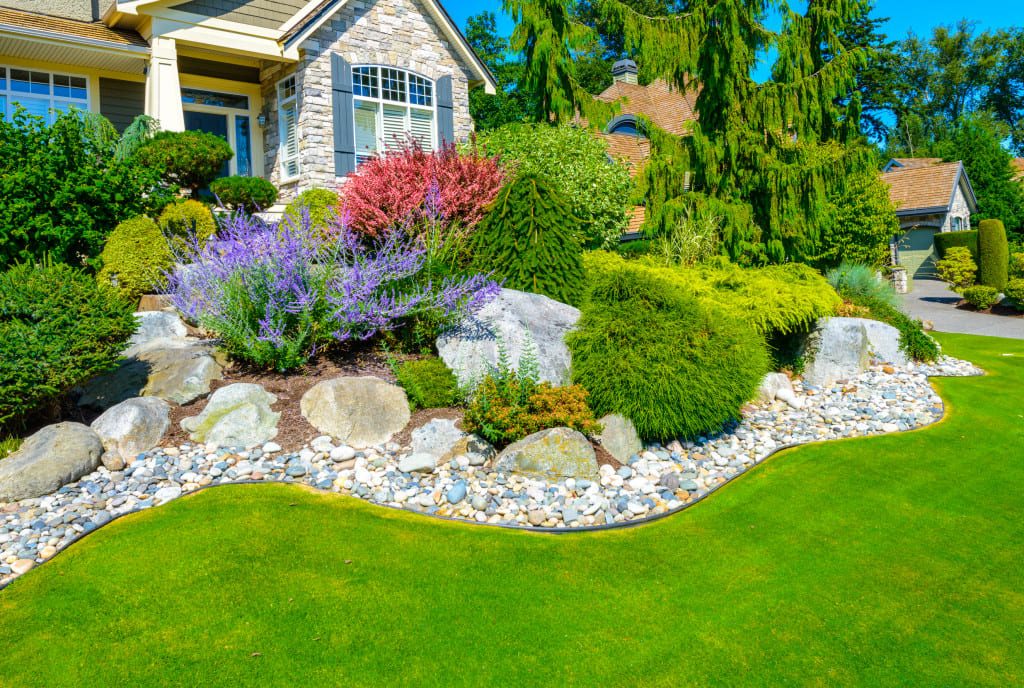Landscaping is more than just arranging plants and paving stones. It’s about creating an environment that reflects the heart and soul of your home. A well-designed landscape can transform an ordinary yard into a personal oasis, providing a place for relaxation, recreation, and aesthetic pleasure. This article explores the key elements of landscaping that make a house feel like a home, providing informative insights and practical tips to help you create your own home-hearted landscape.
Introduction to Landscaping
Landscaping involves the art and science of modifying land areas around your home for aesthetic and practical purposes. It includes the careful planning and implementation of plants, water features, and other elements to create an outdoor environment that complements the architecture of your house and enhances its overall appeal.
A thoughtfully landscaped yard can significantly increase the value of your property while also offering a sanctuary for you and your family. Whether you’re a seasoned gardener or a novice, understanding the basic principles of landscaping can help you create a beautiful and functional outdoor space.
The Elements of Home-Hearted Landscaping
1. Planning and Design
The first step in creating a home-hearted landscape is planning. Consider how you want to use the space and what features are most important to you. Do you want a quiet retreat, a space for entertaining, or a playground for children? Sketch out your ideas and consider the layout of your yard, the amount of sunlight it receives, and any existing features you want to incorporate.
2. Choosing the Right Plants
Plants are the backbone of any landscape. Choose plants that thrive in your climate and soil type. Native plants are often the best choice as they require less maintenance and are more resistant to local pests and diseases. Consider the color, texture, and size of the plants to create visual interest and harmony. Incorporate a mix of trees, shrubs, and flowers to add layers and depth to your landscape.
3. Creating Functional Spaces
A home-hearted landscape is both beautiful and functional. Create different zones in your yard for various activities. A patio or deck can serve as an outdoor living room, while a grassy area can be a play space for children or pets. Paths and walkways can guide visitors through the garden and connect different areas of your yard.
4. Incorporating Water Features
Water features such as ponds, fountains, and waterfalls can add a soothing element to your landscape. The sound of flowing water can create a sense of tranquility and mask unwanted noise from traffic or neighbors. Water features can also attract birds and other wildlife, adding to the natural beauty of your yard.
5. Adding Personal Touches
Your landscape should reflect your personality and style. Add personal touches such as garden art, decorative containers, and unique plant selections. Consider installing outdoor lighting to highlight features and extend the usability of your yard into the evening hours.
6. Sustainable Landscaping Practices
Incorporating sustainable practices into your landscaping can reduce maintenance and benefit the environment. Use organic fertilizers and pest control methods to minimize chemical use. Install a rainwater harvesting system to collect water for irrigation. Mulch your garden beds to retain moisture and suppress weeds.
Practical Tips for Home-Hearted Landscaping
Tip 1: Start Small
If you’re new to landscaping, start with a small project. Focus on one area of your yard and expand gradually as you gain confidence and experience. This approach allows you to learn from your mistakes and refine your design over time.
Tip 2: Use Quality Materials
Invest in quality materials that will last. High-quality soil, mulch, and plants will give you better results and require less maintenance in the long run. Choose durable hardscaping materials such as stone, brick, or concrete for paths and patios.
Tip 3: Plan for Maintenance
Consider the maintenance requirements of your landscape design. Choose low-maintenance plants if you prefer a garden that requires minimal upkeep. Regularly prune and weed your garden to keep it looking its best. A well-maintained landscape will continue to bring joy and beauty to your home for years to come.
Tip 4: Seek Professional Help
Don’t hesitate to seek professional help if you’re unsure where to start or need assistance with complex projects. A landscape designer or horticulturist can provide valuable insights and help you create a cohesive and functional design.
Tip 5: Embrace Change
Gardens are living, evolving spaces. Embrace the changes that come with the seasons and the natural growth of plants. Be open to experimenting with new ideas and adjusting your design as needed. A flexible approach will help you create a landscape that grows and evolves with your home.
Conclusion
Creating a home-hearted landscape is a rewarding endeavor that enhances the beauty and functionality of your outdoor space. By carefully planning your design, choosing the right plants, and incorporating functional and personal elements, you can create a landscape that reflects the heart and soul of your home. Embrace sustainable practices, start small, and seek professional help when needed to ensure your landscape thrives. With patience and creativity, you can transform your yard into a personal oasis that brings joy and tranquility to your everyday life.
Landscaping is more than just gardening; it’s about creating a space that feels like home, providing a haven for relaxation, recreation, and connection with nature. Start your landscaping journey today and watch your home-hearted space come to life.

